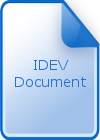Objective
The overarching objective of the evaluation is to examine the relevance, efficiency and effectiveness of the PBL instrument as used by the Bank in regional member countries over the period 1999 – 2009. Specific attention is being given to the evaluation of:
- The AfDB’s institutional and policy framework for the design, appraisal and delivery of PBL: to evaluate the Bank’s formal policy framework, procedures, skills and organisational structure for the delivery of PBL. How well does this reflect emerging international (and Bank) best practice; and is the Bank organisationally equipped to deliver best practice PBL efficiently and effectively?
- Policy and practice: to evaluate the Bank’s approach to the design, appraisal and delivery of PBL instruments in practice and how well this fits or deviates from Bank policy guidelines, with international best practice and country context and needs.
- Choice of aid instruments: to evaluate how choices are made about the use of aid instrument in the country programmes and how relevant it is to the partner country’s problems, policies and priorities
- Effects at country level: To assess the contribution made by the AfDB to policy dialogue, joint processes, institutional strengthening and other relevant areas where PBL is focused.
Main Findings
- Budget support and PBOs have played an important role in sustaining Sierra Leone’s recovery from conflict to which the Bank’s support has made a contribution The provision of Balance of Payments support by the Bank through the Economic Reconstruction and Rehabilitation Programs (ERRP) I, II, and III between 2001 and 2006 provided (along with support from other donors) an important contribution to Sierra Leone’s post-conflict economic stabilisation and recovery, and some contribution to strengthening PFM systems, although the capacity building impact was reduced compared to what was originally envisaged because of the delay in providing complementary support under ERRP III, and predictability of support was adversely affected by the scaling back of support under ERRP III to fit with funding constraints under ADF-X.
- Bank support that has been effectively harmonised with other development partners has contributed towards significant progress in strengthening PFM systems Significant progress has been made in strengthening Sierra Leone’s public finance management system, with the principal risks now relating to weaknesses in budget execution, including the absence of systems to report on results achieved from public expenditure.
- The relative simplicity of MDBS arrangements in Sierra Leone has facilitated Bank involvement, although GoSL involvement beyond MOFED has been limited contributing to failure to meet some benchmarks The MDBS arrangement in Sierra Leone has been a relatively light and less structured process compared to MDBS arrangements in many other African countries, since it has involved only four donors (plus the IMF as an observer), and the process for PAF agreement and monitoring has been relatively informal and largely conducted through meetings between the MDBS donors and officials of MOFED. This has had the advantage of administrative simplicity (which has made it easier for donors with a relatively light field presence to be effectively engaged) and facilitation of effective and flexible dialogue with MOFED. The disadvantage is that involvement of the GOSL beyond MOFED has been variable, and coordination of response to ensure delivery of the PAF as a whole within GOSL has been weak, which has affected the capacity of GOSL to deliver on some benchmarks (such as the completion of the electricity tariff study which was a condition under EGRP I). This has in turn contributed to delays and unpredictability in the receipt of budget support funds, which has constrained government expenditure.
- The relationship between conditions and performance indicators for PBOs is not fully clear EGRP I included 21 performance indicators and indicative targets. The level of achievement of these targets is being assessed as part of the preparation of the PCR for EGRP I. The relationship between the prospects for achievement of these performance indicators and the specific conditions precedent to disbursement of the two tranches is not fully clear, and resulted from a process of negotiation during the preparation of the operation between GOSL and the Bank.
- There does not appear to be a relationship between the results that are considered as potentially attributable to the AfDB’s operations, and the level of funding provided Assessments of the results of the Bank’s PBOs (for instance in PCRs) have focused on progress against benchmarks and defined objectives in terms of policy and institutional reform. There is however in most cases no evident link established between the Bank’s activities (and specifically the amount of finance provided) and the outcomes identified. In addition, the level of financial resources provided by the Bank appears to have been determined principally by considerations of availability of funds and the Bank’s overall portfolio, rather than by an overall assessment of GoSL financing needs and the appropriate division of this between MDBS donors.
- The Bank’s PBOs have performed better than has the Bank’s country portfolio as a whole The Country Portfolio Review in 2009 identified significant problems with the Bank’s operations in Sierra Leone including delays in effectiveness and implementation that were longer then the average Bank operation. Although there have been some delays in implementation with PBOs, these have been substantially fewer than for the rest of the country portfolio, and completed operations have all been rated as satisfactory.
File(s):
| Attachment | Size |
|---|---|
| 679.75 KB |


